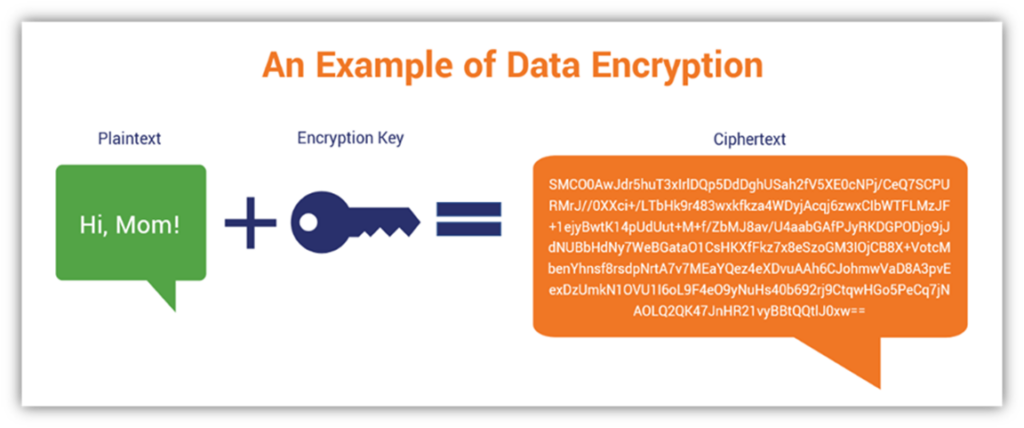In an era where digital interactions underpin our daily lives, cryptography has emerged as a guardian of our confidentiality and integrity. The underlying mechanisms that secure communications, transactions, and sensitive data rely heavily on the concept of cryptographic keys. Understanding the anatomy of these keys illuminates the fascinating realm of cryptography and underscores its significance in our technologically driven world.
Cryptographic keys serve as the linchpin of encryption, acting as unique identifiers that facilitate the transformation of plaintext into ciphertext and vice versa. At its core, a cryptographic key is a string of bits used by cryptographic algorithms to encode or decode information. The choices made in the creation and handling of these keys directly impact data security, rendering the keys themselves not only fascinating but also critical in safeguarding our digital lives.
The pivotal observation that drives intrigue around cryptography is its remarkable ability to protect sensitive information. Society, in its relentless pursuit of privacy and security, has watched as cryptography has evolved from rudimentary substitution ciphers employed by ancient civilizations to the sophisticated cryptographic protocols that govern contemporary digital architectures. This technological evolution raises a tantalizing question: what exactly distinguishes one cryptographic key from another?
Cryptographic keys come in various forms, with the two primary types being symmetric and asymmetric keys. Symmetric keys are characterized by their single-key nature; the same key is utilized for both encryption and decryption. This simplicity is both an advantage and a potential vulnerability. If the key is intercepted or compromised, the entire security of the encrypted data can be jeopardized. Therefore, the challenge lies not only in generating a robust key but also in ensuring its secure distribution. Common algorithms employing symmetric keys include the Advanced Encryption Standard (AES) and the Data Encryption Standard (DES).
Asymmetric keys, on the other hand, utilize a key pair—a public key and a private key. This duality introduces an elegant solution to the key distribution problem inherent in symmetric key methods. The public key can be shared openly, enabling anyone to encrypt messages intended for the owner of the corresponding private key. The latter remains confidential and is used solely to decrypt the incoming communications. Asymmetric systems, such as the Rivest-Shamir-Adleman (RSA) algorithm, provide a foundational architecture for secure online transactions and secure communications.
Delving into the characteristics of cryptographic keys reveals a broader narrative about their mathematical foundations. The security of cryptographic systems hinges on the difficulty of certain mathematical problems, such as prime factorization or discrete logarithms. As the length of a cryptographic key increases, the complexity of these underlying problems escalates, bolstering security exponentially. This mathematical intricacy invites a deeper appreciation for the beauty of cryptography as both an art and a science.
In addition to their mathematical worth, the management of cryptographic keys introduces an essential layer of strategy. The lifecycle of a cryptographic key encompasses its generation, storage, distribution, and eventual destruction. Each of these stages is laden with potential risks. For instance, securely storing keys is paramount; keys stored inadequately may be susceptible to theft or loss, undermining the very purpose of encryption. Moreover, the practices surrounding key revocation and renewal highlight the dynamic nature of cryptography: as systems evolve and threats emerge, so too must the strategies for managing cryptographic keys.
The fascination with cryptographic keys is further amplified by their role in diverse applications. Consider the realm of digital signatures and certificates, which serve as foundational blocks of trust in online transactions. Here, cryptographic keys verify the authenticity and integrity of communications, fostering assurance in a world rife with deceit and fabrication. Digital signatures employ asymmetric keys, with the private key crafting the signature and the public key validating it, thus cementing the sender’s identity and the message’s integrity.
The emergence of quantum computing introduces intriguing challenges for cryptography and, thus, for cryptographic keys. Quantum computers possess the potential to dismantle current encryption paradigms through their computational prowess, prompting researchers to explore quantum-resistant algorithms that can withstand these nascent threats. As the landscape of cybersecurity shifts, so too will the philosophy of cryptographic key formulation and management.
The cerebral pursuit of cryptographic advancement encompasses ongoing debates concerning ethical dimensions as well. The dual-use nature of cryptographic techniques—whereby they can be harnessed for both constructive and destructive purposes—raises dilemmas regarding encryption regulations, whistleblowing, and governmental oversight. These discussions probe the essence of privacy, freedom, and security in a digital age, making the examination of cryptographic keys not merely an exercise in technical understanding but a deep engagement with socio-political implications as well.
In summation, the enigmatic world of cryptographic keys reveals much about the interplay between mathematics and security, the ongoing evolution of technology, and the ethical quandaries of our digital society. As custodians of information integrity, these keys are pivotal to both online safety and the broader discourse surrounding privacy in the modern landscape. They symbolize not just the protection of data but also the fundamental tenets of trust and confidentiality upon which our interconnected lives are built.









Leave a Comment